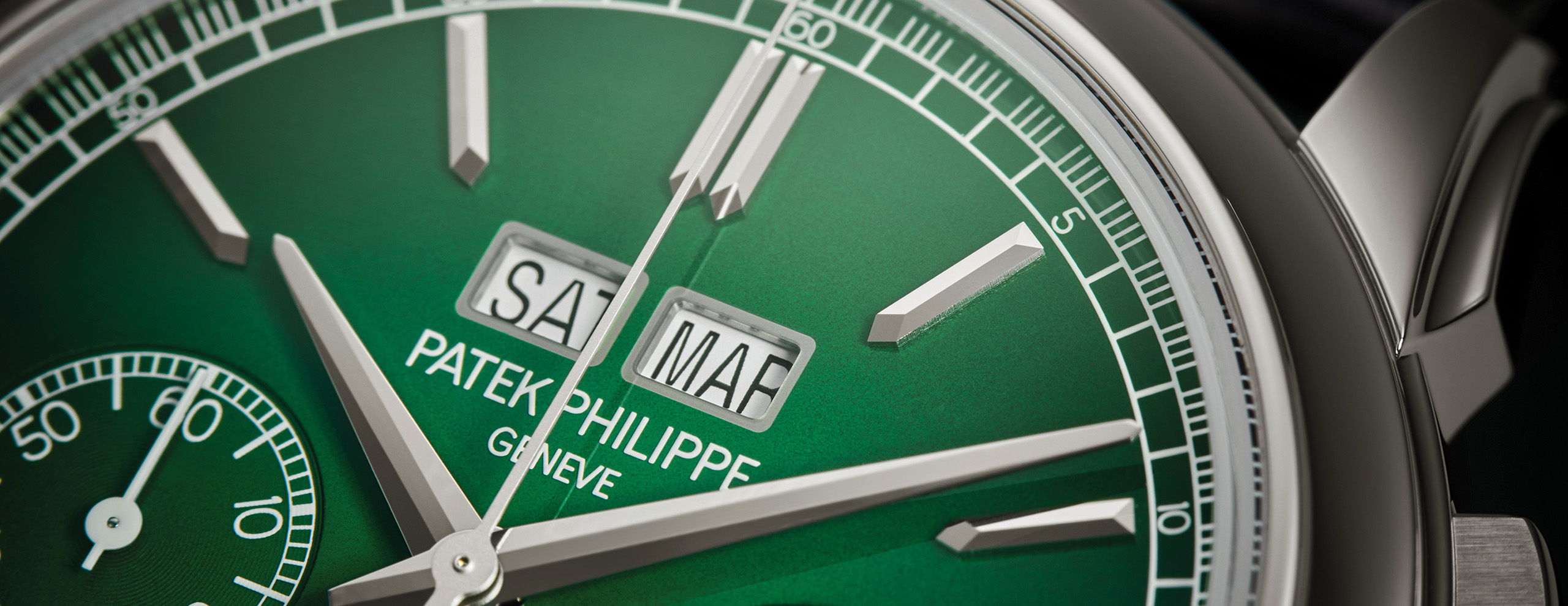Feature
Equal Measure: The modern chronographs of Patek Philippe
Feature
Equal Measure: The modern chronographs of Patek Philippe
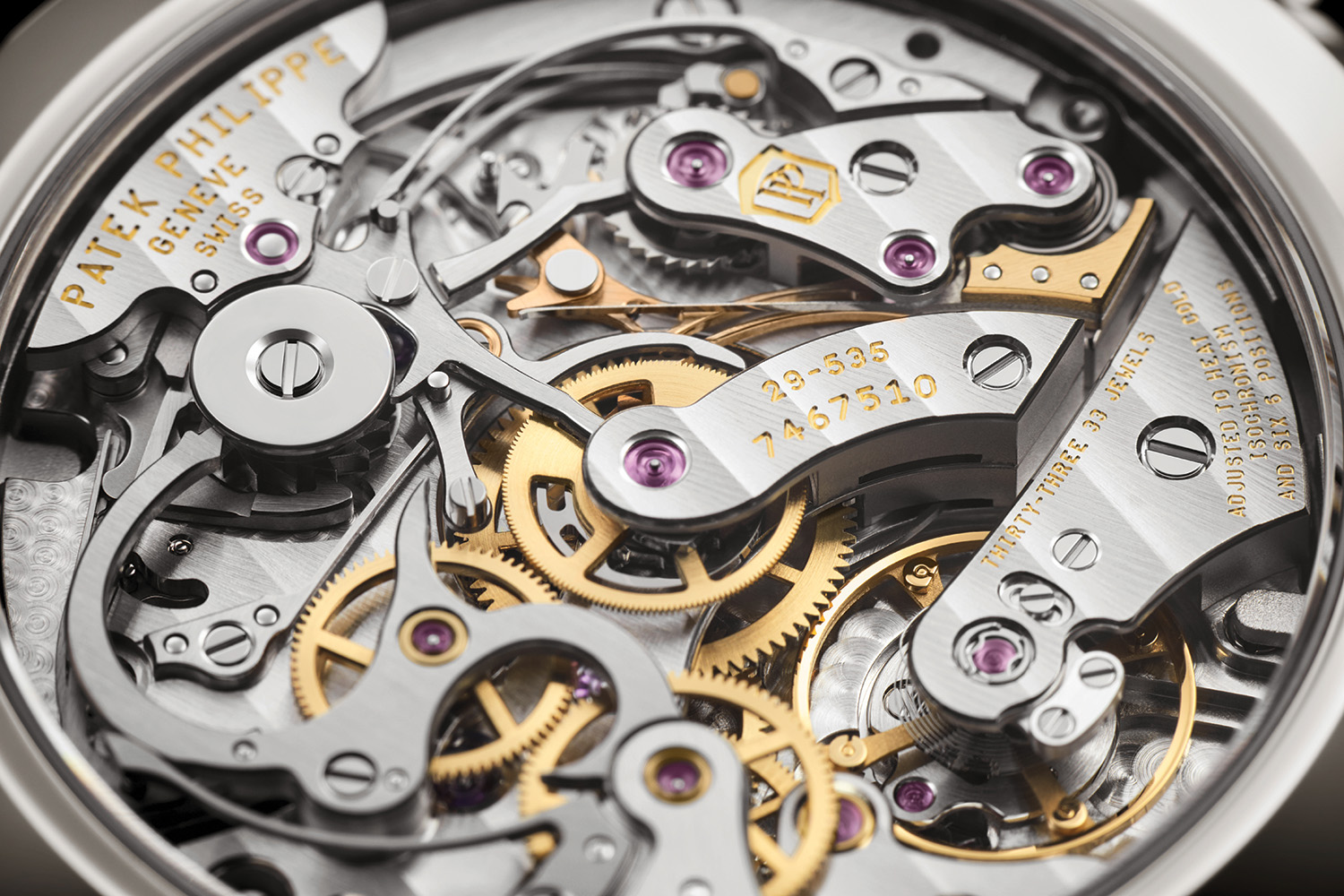
Through the earlier chapters of this long and beautiful timeline, Patek Philippe worked with great chronograph manufactures such as Victorin Piguet, Valjoux and Lemania (later renamed Nouvelle Lemania). In particular, the Lemania caliber 2310 or CH 27-70 provided one of the most reliable bases on which Patek Philippe developed many of its most enduring chronograph references right up to this present moment, with caliber CHR 27-525 PS Q remaining steadfast to some of the manufacture’s split seconds chronograph references. Caliber 2310 was introduced by Lemania in the 1940s and entered Patek Philippe’s history books in the 1980s as CH 27-70, first seen in 1985 in the Ref. 3970 perpetual calendar chronograph and then in 1998 in the chronograph-only Ref. 5070. Measuring 12 lignes (27mm) with a height of 6.74mm, its compact proportions allowed Patek Philippe to further develop a split seconds chronograph off of it, presenting the results in 2007 through Ref. 5959 with caliber CHR 27-525 PS.
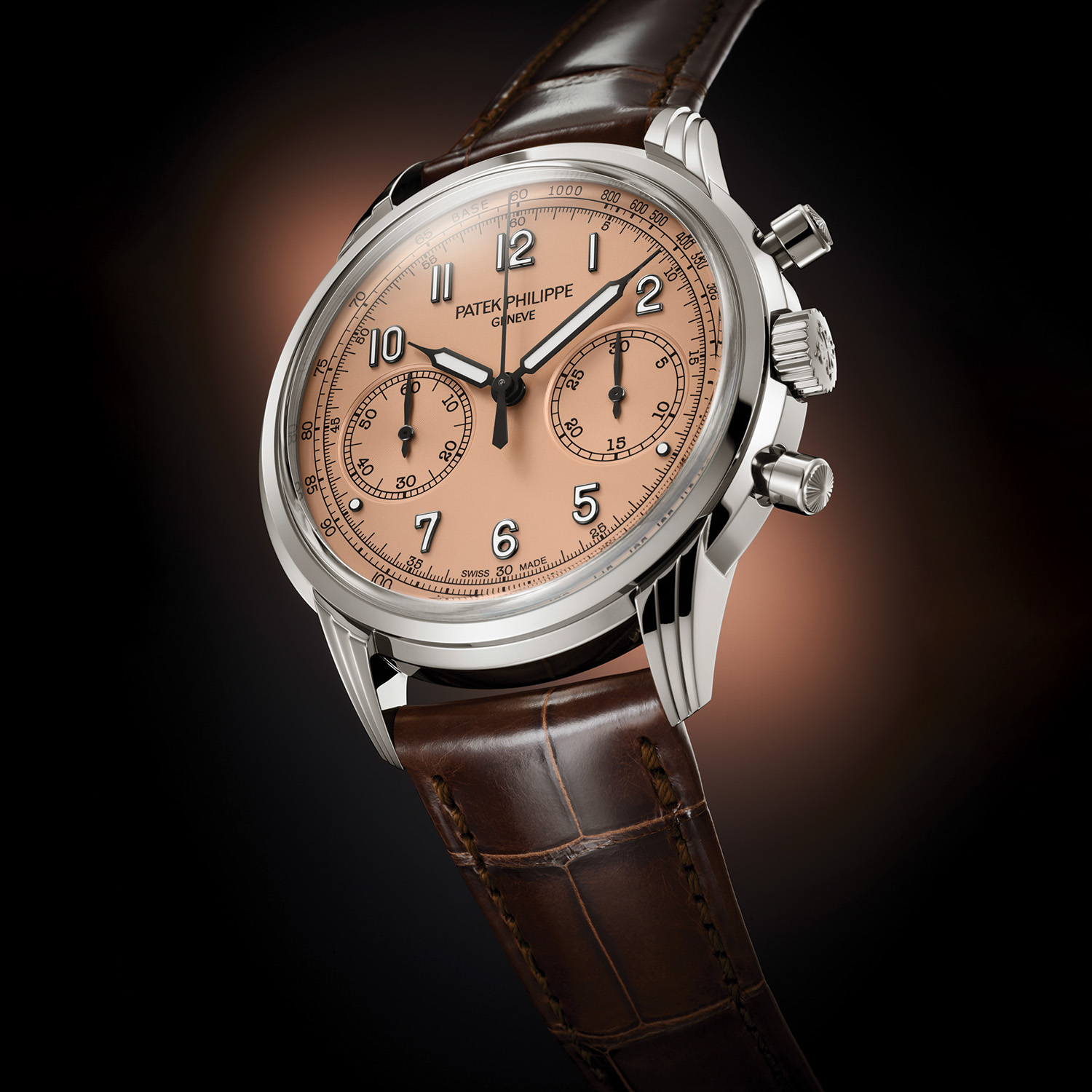
Caliber CH 29-535 PS 9 (top) powers many of Patek Philippe's present day chronographs such as Ref. 5172G
Yet much as the Lemania-based chronographs had met or even surpassed many of Patek Philippe’s rigorous demands and lofty ambitions with such timepieces, one dream remain unfulfilled for the manufacture: to be able to call these chronographs rightfully and unequivocally its own. Thus began in 2004 the research and development of an in-house manufactured integrated chronograph movement that would herald a bold new future for Patek Philippe — one that would also enable the manufacture to pursue ever more ambitious plans with its timekeepers. That movement, as all Patek Philippe aficionados know by now, is the caliber CH 29-535 PS.
The Classical Chronograph
Beginning from carte blanche, the manufacture took this opportunity to create the chronograph of its dreams. It considered every element of the movement, from the core structure and clutch configuration to the design of the wheels and optimal functionality of every single component. Further improvements were incorporated such as the introduction of the eccentric column wheel cap and a finger clutch lever to ensure smoother operation of the chronograph function. At the same time, it was eminently clear that this movement shall be Patek Philippe’s modern rendition of a classical manual wind column wheel chronograph, because the manufacture had already introduced its first fully proprietary chronograph self-winding movement caliber CH 28-520 in 2006 — but more on that later.
Caliber CH 29-535 PS stands apart from the Lemania caliber in a number of ways, primarily being updated to modern standards in performance and reliability. It has a 4 hertz oscillating frequency as opposed to 2.4Hz, and 65 hours of power reserve as opposed to 40 hours. It also proposed a precise jumping minute counter featuring a novel snail cam profile and an oversized spiral spring to provide power to the chronograph minute lever and, as mentioned earlier, debuted a new tooth profile for the chronograph wheel and the drive wheel that was aimed at eliminating the dreaded chronograph backlash. Taken altogether, Patek Philippe filed the following six new patents on the caliber CH 29-535 PS: optimized tooth profile, optimized synchronization of clutch lever and brake lever, precise adjustment of engagement depth at column wheel, slotted minute counter cam for precise jumping minute counter, self-setting hammers, and hammers pivoted between jewel bearings.
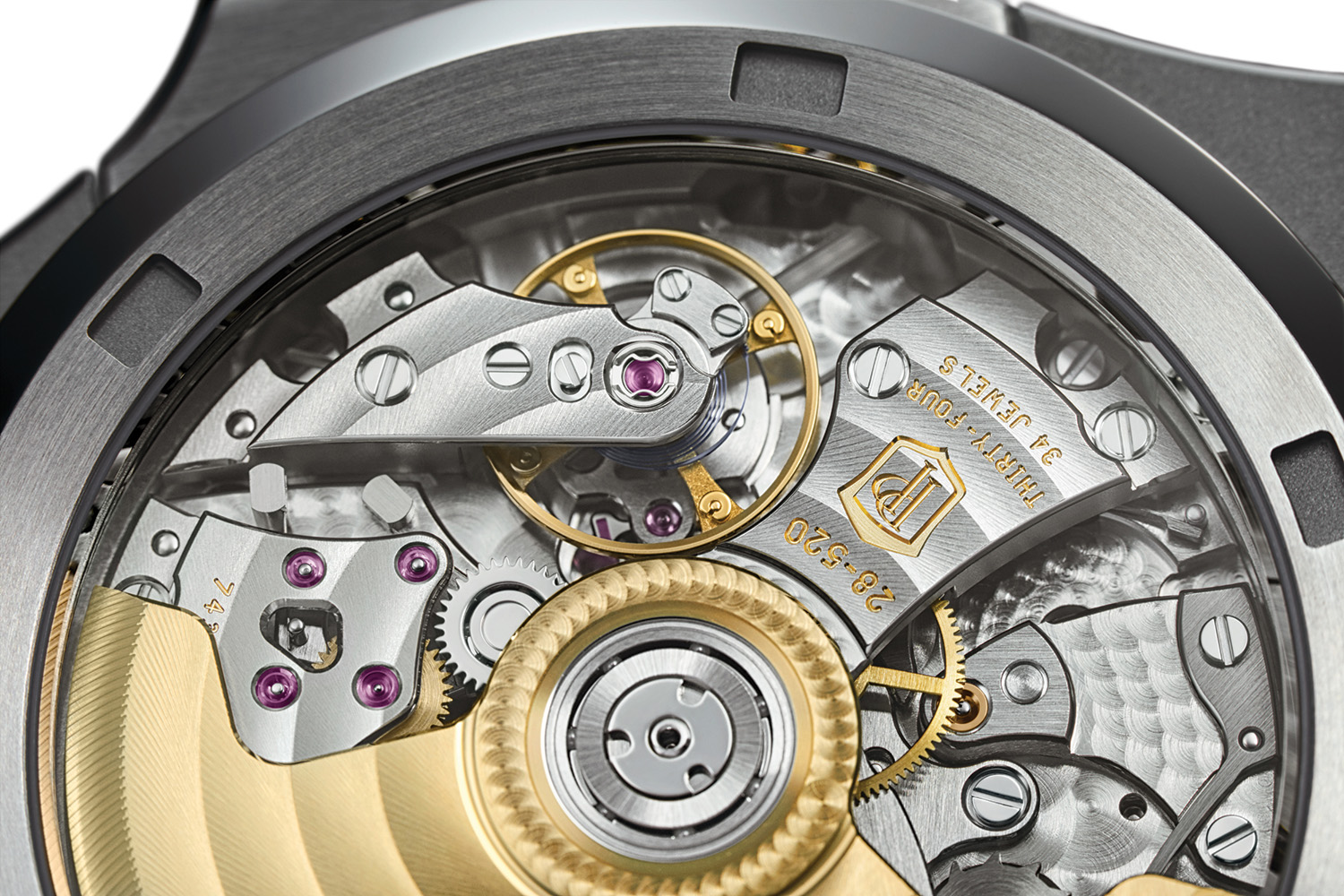
The self-winding caliber CH 28-520 has a vertical clutch configuration
After its much celebrated launch in 2009 with a surprising debut in the Ladies First Chronograph Ref. 7071, caliber CH 29-535 PS steadily made its way into Patek Philippe’s men’s collection and today powers the classical models 5172 and 5270, as well as 5470 which sprints on the high-speed monopusher version of the movement, caliber CH 29-535 PS 1/10, displaying elapsed time accurate to 1/10th of a second. Other variants of this caliber include the perpetual calendar chronograph CH 29-535 PS Q, split seconds chronograph CHR 29-535 PS, and perpetual calendar split seconds chronograph CHR 29-535 PS Q. Finally, it has to be mentioned that the caliber CH 29-535 PS is the first in the manufacture’s history to bear the Patek Philippe Seal, attesting to the quality and finesse of the movement according to factors defined by Patek Philippe and Patek Philippe alone.
The arrival of caliber CH 29-535 PS has indeed completed Patek Philippe’s immense offering of chronographs. But in no way should one take this to mean that the manufacture had not made any strides in this sector prior to its development — far from it. Shortly after the turn of the new millennium, and a few years before caliber CH 29-535 PS was revealed, Patek Philippe had already found an opportune moment to present its first officially in-house manufactured automatic chronograph movement, caliber CH 28-520, which was conceptualized and designed for the modern era.
The High Performance Chronograph
Introduced in 2006, caliber CH 28-520 was destined for a completely different path than the caliber 29-535 PS. It arrived at a point in Patek Philippe history when the manufacture was pushing ever harder the possibilities of modern watchmaking as it revealed the first results of its experimentation with silicon components. A year earlier, Patek Philippe had debuted the first silicon escape wheel for a Swiss lever escapement in its Advanced Research Ref. 5250 Annual Calendar. Together with the launch of caliber CH 28-520, the manufacture unveiled its then-new and highly revolutionary Spiromax silicon-based balance spring, and then in 2008, continued with the introduction of the Pulsomax escapement comprising a pallet fork and escape wheel, both of which are silicon-based.
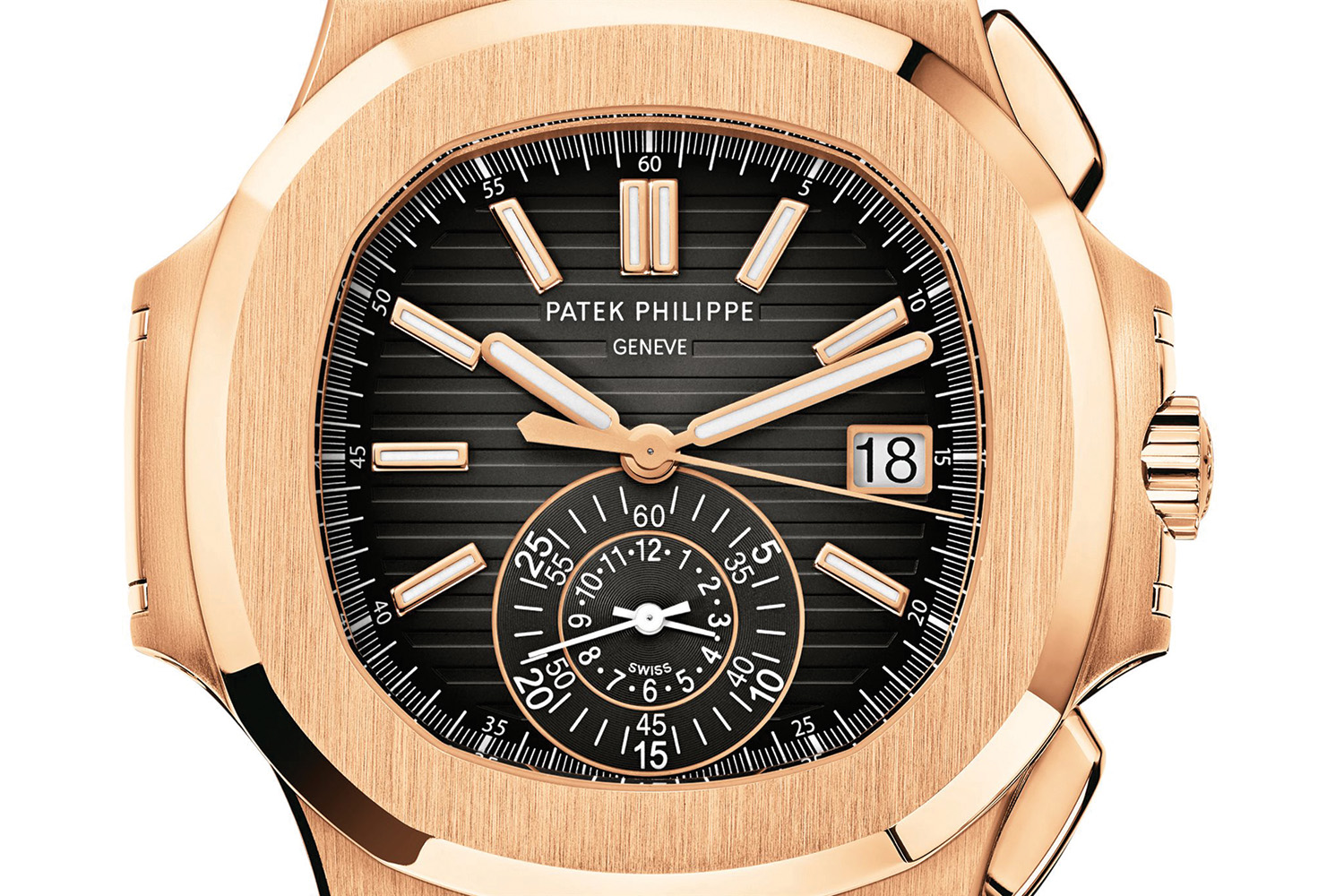
Suffice to say, caliber CH 28-520 heralded a new dawn for Patek Philippe. Unlike the earlier Lemania-based CH 27-70 family of chronographs, it is utterly contemporary and incorporates all the necessary features of a high-performance and ultra robust chronograph movement. Automatic winding with a 21K gold central rotor allows it to be a suitable daily timepiece. The vertical clutch configuration with column wheel means you could use the chronograph hand as a running seconds hand with negligible impact on amplitude. The 30mm diameter at a height of 5.3mm allows it to be highly compatible with additional stack-on modules. A slightly increased power reserve of between 50 to 55 hours allows wearers to leave it over the weekend without requiring time setting on Monday. The 4 hertz or 28,800vph frequency provides higher resistance to micro-shock, while the flyback function makes timekeeping extra convenient. It also combines the Spiromax hairspring with a Gyromax balance which instantly establishes caliber CH 28-520 as one of the industry’s most future forward movements in the new millennium.
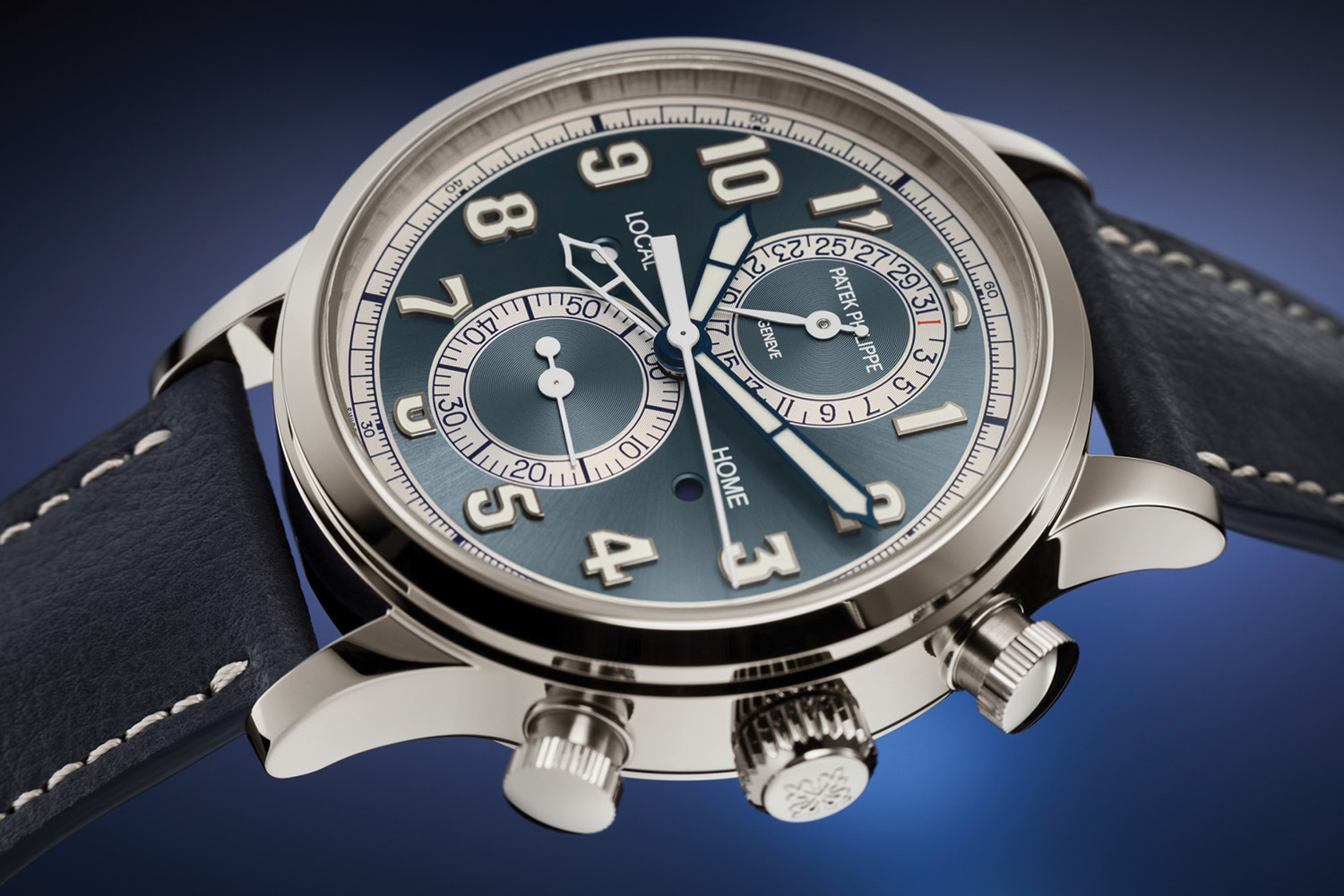
On top of these technical improvements, caliber CH 28-520 also proposed a completely new method of displaying elapsed time. Instead of the standard chronograph subdials for the small seconds, 30-minute counter and 12-hour counter, this movement packs both the minute and the hour totalizers within one off-centered circular display at six o’clock. Two small co-axially mounted hands provide readings of elapsed time, while the chronograph seconds hand is centrally mounted, co-axial with the hour and minute hands, springing to action once the pusher is activated. Additionally, there is a day/night indicator discreetly contained within this display, increasing the overall functionality of the timepiece. Caliber CH 28-520 first appeared in the Ref. 5960 and the movement reference for this model is the caliber CH 28-520 IRM QA 24H, where IRM refers to indicateur réserve de marche and QA, quantième annuel, which tells us that the three apertures arching across the dial self-adjusts at the end of every month except on February 29, making this a later version of Patek’s annual calendar chronograph.
Caliber CH 28-520 is also found in the Nautilus and Aquanaut chronograph models 5980 and 5968, albeit as a simplified version without the complete annual calendar display and a pared-down chronograph display showing only elapsed minutes, and the date. The movement references for these models are the calibers CH 28-520 C/522 and CH 28-520 C/528 respectively for the Nautilus and the Aquanaut, with the base caliber CH 28-520 found in the Aquanaut Luce Ref. 7968/300R-001.
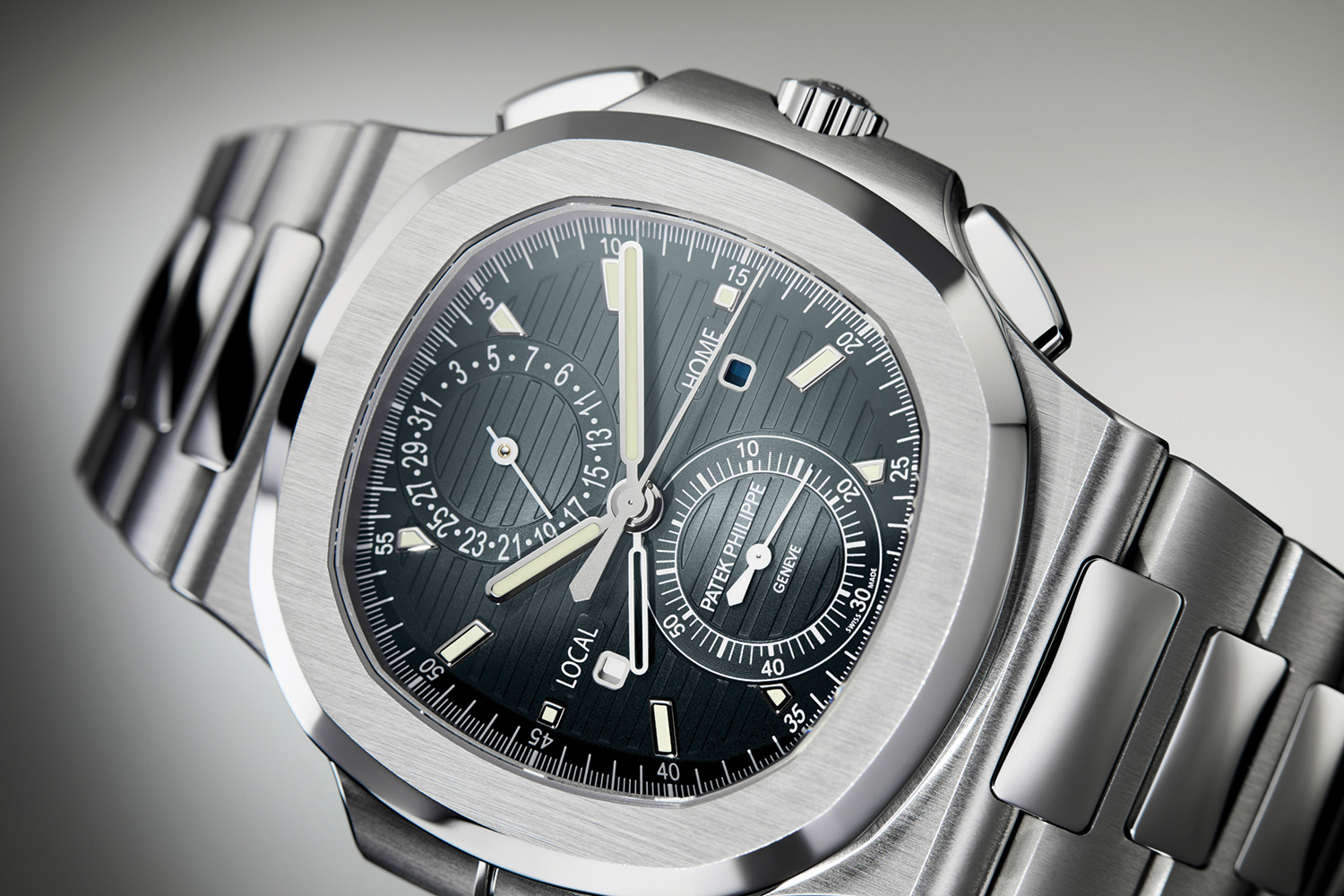
Without an annual calendar module, caliber CH 28-520 C has an overall height of 6.63mm and this remains relatively slim for a chronograph movement, which brings us back to Patek Philippe’s original intention to design the movement such that it could accommodate a variety of complications while retaining a slim profile. To date, the manufacture has also paired it with a dual time function with day/night indication, as shown with caliber CH 28-520 C FUS where FUS refers to fuseau horaire. This movement is used in the Nautilus and Calatrava Pilot Travel Time collections’ Refs. 5924 and 5990. Along with dual time, Patek Philippe has also equipped the movement with the world time complication — a collector’s favorite for sure — in calibers CH 28-520 HU/524 and CH 28-520 HU/530, where HU refers to heure universelle.
With the classical construction of caliber CH 29-535 PS and the technical superiority of caliber CH 28-520 C, Patek Philippe continues its chronograph story by merging two highly distinctive yet ultimately equal objects of measuring time.




